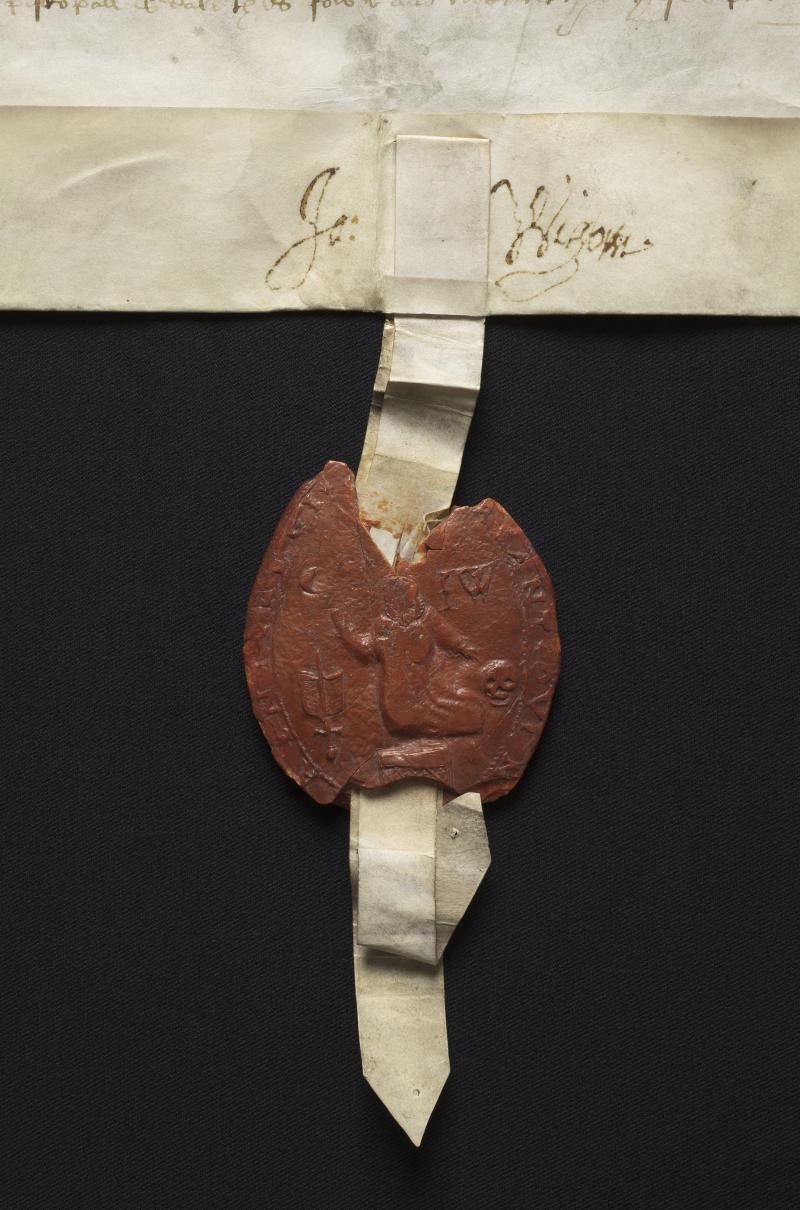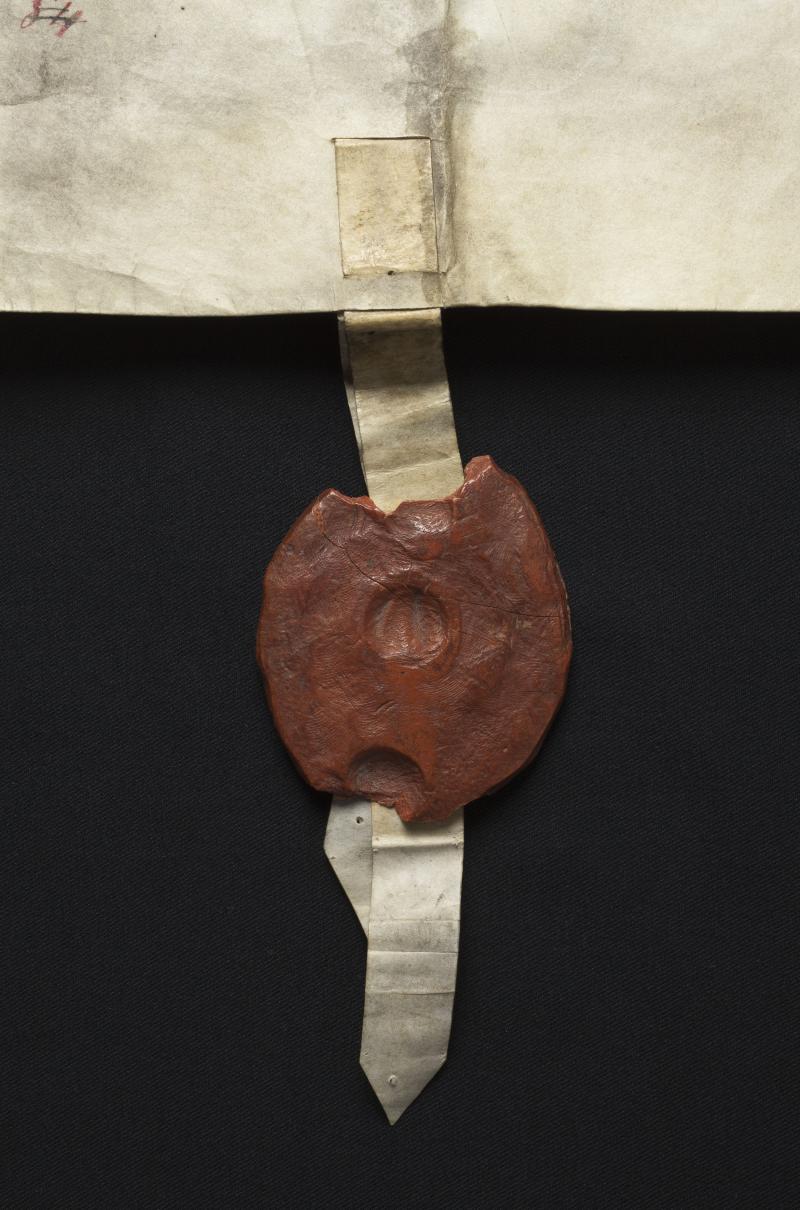Reproduced by permission of Shakespeare Birthplace Trust
Terms of use
The Shakespeare Birthplace Trust has graciously contributed images under a Creative Commons Attribution NonCommerical ShareAlike 4.0 International license. Visitors may download, link to and cite the images for personal research only. Any further use, including, but not limited to, unauthorized downloading or distribution of the images, commercial or third party use, is strictly prohibited. Visitors must contact the Shakespeare Birthplace Trust to request additional use, at: images.scla@shakespeare.org.uk
Document-specific information
Creator: John Thornborough, Bishop of Worcester
Date: April 24, 1633
Repository: The Shakespeare Birthplace Trust, Stratford-upon-Avon, UK
Call number and opening: ER78/7
View online bibliographic record
Robert Bearman, "John and Susanna Hall are granted the use of a seat 'in the bodye' (probably the nave) of Holy Trinity Church, Stratford by a license issued by John Thornborough, bishop of Worcester," Shakespeare Documented, https://doi.org/10.37078/449.
Shakespeare Birthplace Trust, ER78/7. See Shakespeare Documented, https://doi.org/10.37078/449.
The grant shown here needs to be read in the context of a fierce dispute between the zealous Puritan vicar of Holy Trinity Church, Thomas Wilson, and the more moderate majority of the Stratford Corporation. Ostensibly, this dispute concerned an increase in Wilson’s stipend, paid to him out of the income the Corporation enjoyed from its ownership of a large portion of the parish tithes. (For the origin of this responsibility, please refer to Ralph Hubaud’s 1605 assignment of a lease of a share in the Stratford Tithes to William Shakespeare.) However, it also reflected a wider concern about Wilson’s increasingly Puritan agenda and the quarrel soon overflowed into reserved seating arrangements in the parish church of Holy Trinity. This was a flashpoint in Stratford as elsewhere in an age when this issue was closely associated with social standing in the local community.
One of Vicar Wilson’s strongest supporters, at least in his claim for a higher stipend, was John Hall, Shakespeare’s son-in-law, who from July 1632 had also been serving the Corporation as a capital burgess. This inevitably led Hall into conflict with the less zealous majority of the Corporation, and on October 9, 1633 he was expelled, by nineteen votes to three, “for wilful breach of orders, sundry other misdemeanours and continual disturbances.”
It was in the middle of this controversy that on April 24, 1633 John Thornborough, bishop of Worcester, confirmed a particular seat to Hall and his family. The document begins with a statement that Wilson, and three of his churchwardens, had recently repaired or set up “a seate or pewe in the bodye of the said Church adioyneinge unto the seat of William Combes esquire and unto an Arch on the north side” and then granted it, “for a kneeling place for hearinge divine service and Sermons” to John Hall and his wife and family. However, this had clearly caused some bad feeling in the community, leading Hall to seek the approval and confirmation of the arrangement from the bishop of Worcester, John Thornborough, in whose diocese Stratford then lay. Thornborough was then in his mid-eighties and, as shown here, signs in a shaky hand.
The location of the new or repaired pew, adjoining that of the local esquire, William Combe, reflected the Hall family’s social status. However, it led to direct conflict with the Corporation who claimed that Hall and his family already had a large family pew “on the other syde the Church neare the pulpitt” (presumably linked to their ownership of New Place) and that the repaired pew now claimed by Hall had belonged “time out of mynde” to the aldermen’s wives. This dispute was doubtless a factor in the “disturbances” which led to Hall’s expulsion from the Corporation six months later.
The quarrel over the pew dragged on for over two years: at one point a local joiner was even presented by the churchwardens for pulling it down (ER 1/1/95; BRU 15/13/103, fol. 7v). The matter was eventually resolved by a ruling of June 1635 whereby the seat was confirmed to the use of Hall and his wife, their daughter, Elizabeth and her husband, Thomas Nash, and also “Mrs Woodward and Mrs Lane ... for them to sitt and kneele in, yf the same seate were large ynough for them.” If this proved too small then the Halls were to return to the other seat near the pulpit (BRU 15/13/96).
Written by Robert Bearman
Last updated July 11, 2020













